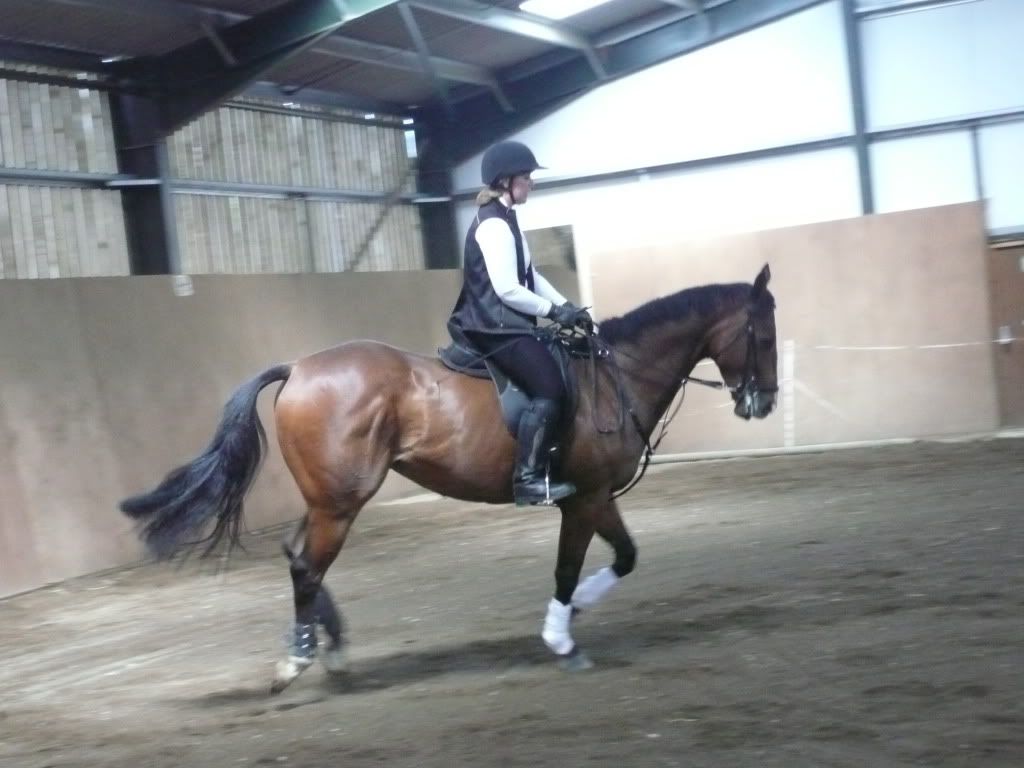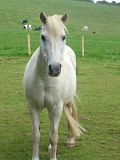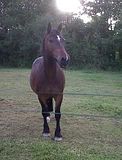|
|
Post by racaille on Sept 1, 2008 3:38:53 GMT
This is in response to a a query elsewhere after I said it was very difficult to feed here (Luberon)  . The terrain here is rocky/stony, with mountain ranges creating sunny valleys. This is great for growing grapes  but the only 'fields' we have here are very small and along the relatively thin strip beside the river Durance. Wheat and hay are grown, but in small quantities, with a bit of luzerne and san foin. There are no grassy fields for the horses to nibble at. Their paddocks are stony or dusty or both! It means that all their roughage has to be bought in. I'm trying hard to think where in France hay is grown commercially but can't think of anywhere in the southern half, so we are talking about ferocious transport costs from the north. So we buy what we can from the local farmers. This varies, according to the time of the year and means that the horses' diet changes often: quality of the hay, the odd round bale of luzerne or san foin - and these bring their own problems as san foin can be fed at will but luzerne can't, so we have to estimate the dosage for each horse, not like easy slices, which complicates things when you are feeding 40 nags! And when the harvests are done, we buy in as much as there is available, because that's all there is. I've never seen bagged fibre feed here in anything other than rabbit-sized quantities! This year we 'ran out' of hay because it was damp in May and the first harvest was late. We had to scratch around to get anything we could - but everyone else was doing the same so it was pretty difficult. On the other hand, some farmers grow 'sand carrots' so in early summer we can get these cheap by the ton, which helps. It's far from the ideal but everyone in the dry south has the same problem.  |
|
|
|
Post by kateflashy on Sept 1, 2008 5:36:54 GMT
same here , we are lucky that a local farmer, is now semi retired so only keeps a few cattle, but still makes tons of hay, so he sells us the excess , we can only occasoinly get luzerne at the point vert, and its so expensive, 25E€ for a tiny bale , which does about 4 horses 1 meal, and feed wise dont do mixes only seperates, oats, barley, maize, or pony nuts, if we go to alitarn we can get alfa a, but at 30€ a sack plus the 20 mile each way journey, becomes very expensive feed , our grass is non existant, more like a sandy desert with a few weeds
|
|
|
|
Post by zara on Sept 1, 2008 12:58:39 GMT
racaille feeding your horse's sounds really hard work and makes me realise how lucky I am to have ad lib hay / haylage included in my livery. Just goes to show that there are pros and cons to living anywhere Zx
|
|
|
|
Post by brigadier on Sept 1, 2008 15:21:56 GMT
Blimey,
Sounds a nightmare- you must really have to plan ahead as if you dont how can you introduce a change gradually? But how can you plan ahead when you wont know whether your stockist can get the feed?- like Zara sys we really dont know how lucky we are in our rather wet but lush land. It must be hard to keep condition on, mind you we are a nation that likes our portly ponies and perhaps can get a bit paranoid about lean and fit and fat and fit- will post a pic of Basil when I first got him- he looks really really underweight- he wasnt, he was racing fit but the pic will make you gasp! To follow!
|
|
ceej
Administrator  im back.... :)
im back.... :)
Posts: 5,363
|
Post by ceej on Sept 1, 2008 15:59:46 GMT
In many ways I wish we had much less grass - I struggle to keep the weight off my two....thay are always fat and I feel ashamed but they hardly eat anything!!!  so I guess areas have different problems... |
|
|
|
Post by brigadier on Sept 1, 2008 16:20:46 GMT
Mind you, my first horse was a real pot bellied pig- but one spring he went really poor- hatrack poor! Wormed him, teeth done, not in pain etc etc. Eventually he put the weight on but the skinny phase sort of crept up on me and I only really noticed when he was sedated for his teeth (vet was a wimp!) and all his muscles sagged! So its easy to miss the first crucial stages when a horse is starting to lose a bit.
I think with hindsight it was probably his teeth as a year or so later I got Tommy Nevin in to do his teeth and he showed me the state of his mouth- there must have been hooks an inch long! (vet was sacked by this time!) So two points to this story- if they continue to lose weight after all the checks get second opinions and loss of condition or too much condition can creep up on us!
|
|
|
|
Post by racaille on Sept 1, 2008 18:25:38 GMT
He he, it's a pain, isn't it?! So next time you are cursing the rain (that makes your grass grow!) spare a thought .....!
As for gradual changes, well, we do the best we can, but .... on the other hand, we mostly have small rustic horses, who seem to cope fine with the chopping and changing. And when I go on long-distance rando, I can't be sure I'll get anything like the stuff we feed, so Paco has to eat what is on offer.
It has always intrigued me, in the stories of long riders, how people feed. Tschifferly's ride, for example, or more recently in a book called A Girl, A Horse and A Dog, this girl rode from southern Spain to Paris and often her horse Dragon had nothing more to eat than a few lettuces, then the next day a sack of corn!!!!!
It makes me think that actually (some) horses are more robust (digestion-wise) than we think.
|
|
|
|
Post by brigadier on Sept 1, 2008 19:43:58 GMT
I think you are right, in the wild they trickle graze but one day may come across some lush pasture and youre not telling me they dont gorge! But is it perhaps that we faff with their feed and give them stuff thats not really intended for horses (barley was always for cows and you dont get micronized maize on your average steppe or savannah do you??) that weve made their bellys sensitive.
Worms and teeth and disease are the biggest factors affecting an average 'pet' horses weight I think. Few people would knowingly starve their horses.
Billy a horse I helped rescue off an estate in Leeds was like a hat rack yet his tethered mate was nice and fat. Turned out Billy had Cushings and he had to be PTS. His main concern was thirst and to the end he would guard his water bowl with ferocious zeal! All the tethered horses on the common near where I work are fat and healthy looking- theres little grass but apart from being bored as old socks they look ok!
Do you believe the hidalgo story- its brilliant if its true but I read an article it was more fabrication and over imagination than truth?
|
|
|
|
Post by racaille on Sept 2, 2008 7:55:34 GMT
Hildalgo - that's interesting, I shall have to do some research now ... have you seen the film Serko (might only be in French but there's not a lot of talking!) about a horse that was ridden across the Russian steppes by a Cossack to protest about something or other ...
I utterly agree that we feed too much processed food to our nags. But it's all about compromises, isn't it? If we left them to feed as nature intended, there wouldn't be any time for us to ride ;D As you know, I have an enduro coming up in 20 days time and will have to start changing Paco's feed about now to reintroduce hard feed (he's currently stuffing his face with luzerne, since there is some about) but there isn't the time in the day for him to eat enough high-fibre energy-food when we are on the trail. It always bothers me as I live in fear of azoturia although it seems I am the only one ... saw a horse dying of it last year and it was horrible. Been reading a bit of research into it recently and it has been an eye opener - I always thought that calling it Monday sickness was misleading.
|
|
 .
. but the only 'fields' we have here are very small and along the relatively thin strip beside the river Durance. Wheat and hay are grown, but in small quantities, with a bit of luzerne and san foin.
but the only 'fields' we have here are very small and along the relatively thin strip beside the river Durance. Wheat and hay are grown, but in small quantities, with a bit of luzerne and san foin. 
 .
. but the only 'fields' we have here are very small and along the relatively thin strip beside the river Durance. Wheat and hay are grown, but in small quantities, with a bit of luzerne and san foin.
but the only 'fields' we have here are very small and along the relatively thin strip beside the river Durance. Wheat and hay are grown, but in small quantities, with a bit of luzerne and san foin. 





 for so much hard work we thank ye!!
for so much hard work we thank ye!! so I guess areas have different problems...
so I guess areas have different problems...



